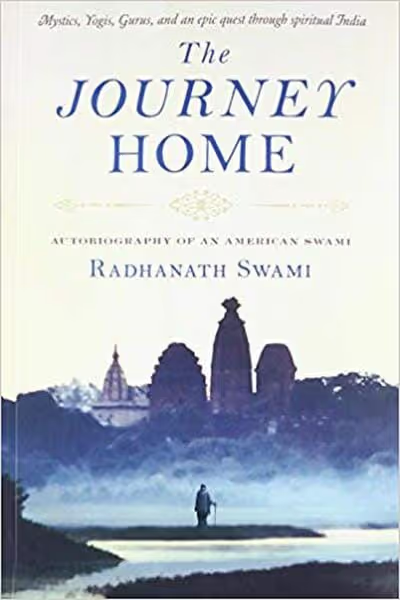
In my whole life, I have known no wise people (over a broad subject matter area) who didn’t read all the time – none, zero. Charlie Munger
Do you often feel like you don't have enough time to read books? Do you finish a book and then can't remember what happened in it? You're not alone. Many people struggle with reading books and remembering what they read. In this blog post, we will discuss some of the best ways to read books so that you can improve your memory and get more out of the reading experience.
Quit Books
It's a pain to read bad novels. Books that are well-written practically read themselves.
You know it when you find a fantastic book. They're not only well-written and jam-packed with ideas and insight, but they're also very well structured. You can't wait to get your hands on the following page.
Start quickly but abandon easily. Our desire to complete what we begin at times works against us. Good books have a way of finishing on their own. You can't put them down. It's impossible to finish a terrible book, but it's similar to pushing a wheelbarrow full of bricks through the muck. Life is far too short.
Skim a lot of books. Read a few. Immediately re-read the best ones twice.
You don't need to finish what you start when it comes to reading.
Everything changes once you figure out that you don't have to feel guilty if you stop reading bad books (or anything else). Putting a rotten book down opens the door for something wonderful.
Levels of Reading
The easy part is reading the words on the page (or screen). We learned how to do this in elementary school. The issue is that this is the only way we've ever learnt to read.
Tailoring how you read to what you're reading makes more sense. Not everything has to be read with the same level of intensity. Some books just require a quick scan, while others need your complete attention. How much effort you put into it is dependent on why you're reading it and what you're reading.
The Levels of Reading offers four distinct ways to read (from simplest to most difficult). The bulk of our time will be spent between levels 2 and 3.
- Reading to Entertain — The level of reading taught in our elementary schools.
- Reading to Inform — A superficial read. You skim, dive in and out, and get a feel for the book and get the gist of things.
- Reading to Understand— The real workhorse of reading. This is a thorough reading where you chew on things and digest them.
- Reading to Master — If you read just one book on a subject, you're likely to have a lot of gaps in your understanding. Synoptic reading is the practice of reading numerous books and articles about the same topic and noting contradictions.
Reading takes a lot of effort.
Speed Reading
A vanity measurement is reading speed. Nobody pays attention to how fast you read or how many books you read last year in the real world what matters is what you take in.
Skim quickly to discover material worth reading. Then slowly and thoroughly immerse yourself.
Choose Great Books
Selecting excellent raw material is the first step in improving what you get out of reading. It's more difficult to make healthy selections if your home is cluttered with waste, just as it is to obtain outstanding ideas from books that haven't stood the test of time.
If you're like most people, you'll be drawn to more recent publications. New books are brimming with sex appeal, marketing, and empty promises. While a few new publications might be useful, the overall majority will be forgotten within months.
Time sorts the books worth reading from the ones that should be skimmed or ignored.
We simply can't tell which new works will be fantastic, and which won't. As a result, let time do the screening for us. What works is filtered out by time. There's no need to waste time reading books that aren't long-lasting.
Much of what you want from new books (skill development, recipes, programming languages) can be found online.
Reading time is limited, so choose your reading material wisely. The cost of reading something new is re-reading the best book you've ever read.
Read classic novels. Read the greatest books twice.
While this method is less popular than reading the latest best-seller that everyone is talking about, the vast majority of those books will fail over time.
Taking Notes
The Blank Sheet
The single most important thing you can do to get more out of the books you read is employ the blank sheet technique.
The blank sheet primes your brain for what you’re about to read and shows you what you’re learning.
Here’s how it works:
- Take out a fresh sheet of paper before you begin reading a new book. Make a mind map of what you already know about the book or topic you're about to study — a mnemonic if you will.
- After completing a reading session, spend a few minutes adding to the map with a different color.
- Before you begin your next reading session, take a look at the page again.
- When you've finished reading, file these "blank pages" in a binder that you go over on a regular basis.

Why is this method so effective?
The blank sheet prepares your mind for what you're about to read and aids in the comprehension process.
When you begin with a clean sheet, you must search your memory and write down what you know (or believe you know) about a subject.
As you read, your understanding advances incrementally as you add new information to the foundation. You'll frequently discover that you had preconceived notions about what you thought you knew.
After a reading, reviewing what you knew about a topic as well as what you learned previously not only enhances memory and recall, but it also aids in the organization of thoughts. The majority of early connections are made when the authors' original material is linked to your foundation.
Don't worry if you have no prior knowledge about the topic. You may use the book as scaffolding to get started.
As your cognitive fluency in a field improves, you'll begin connecting ideas across disciplines, disagreeing with authors on certain issues, and even coming up with your own theories.
When you've finished the book, bind it. Every few months, go through the binder once again. This final step is critical for developing strong fluency and connecting ideas across fields.
Conventional Notes
Forget the teacher that scolded you for writing in your book when you were a youngster. This is something you bought. It's your right to write in the margins.
Here's a quick way to take notes as you go through:
- At the conclusion of each chapter, make a few bullet points summarizing the key idea or key elements. Use your own words and not those of the authors. Make a note of any unanswered questions you had while reading.
- Put the book down for a week after you've finished it.
- Read the book one more time, go through all of your notes, and pick it up where you left off. In several situations, reading your notes will be as beneficial as reading the book again.
- On the inside cover, write out the book's major concept using your own words. If you get stuck, go back to your notes. Writing is a method of discovering that we don't know what we're talking about frequently.
- You may even create a unique index on the back cover based on themes or subjects.
- (Optional) Copy the sections by hand and paste them on the back of your blank sheet from above or type them and save them in Evernote. Make sure to tag your notes.
Both conventional notes and the blank sheet are designed to link new information to past knowledge, as well as identify gaps in your understanding. Writing about what you've read is a wonderful technique to assess how much you've learnt.
Reading More
You can't get where you want to go if you don't keep learning. One of the most effective methods to learn is through reading.
Don't believe that reading habits need to be complicated; you can establish a simple 25-page-a-day habit right now. While it may appear to be small, the benefits accumulate quickly.
Above all else remember that just because you’ve read something doesn’t mean you’ve done the work required to have an opinion.
A great tool to find new books to read is Good Books.
With half a million copies in print, How to Read a Book is the best and most successful guide to reading comprehension for the general reader, completely rewritten and updated with new material.
A CNN Book of the Week: “Explains not just why we should read books, but how we should read them. It's masterfully done.” –Farheed Zakaria
Originally published in 1940, this book is a rare phenomenon, a living classic that introduces and elucidates the various levels of reading and how to achieve them—from elementary reading, through systematic skimming and inspectional reading, to speed reading. Readers will learn when and how to “judge a book by its cover,” and also how to X-ray it, read critically, and extract the author’s message from the text.
Also included is instruction in the different techniques that work best for reading particular genres, such as practical books, imaginative literature, plays, poetry, history, science and mathematics, philosophy and social science works.
Finally, the authors offer a recommended reading list and supply reading tests you can use measure your own progress in reading skills, comprehension, and speed.








.avif)
.avif)
.avif)
.webp)








































